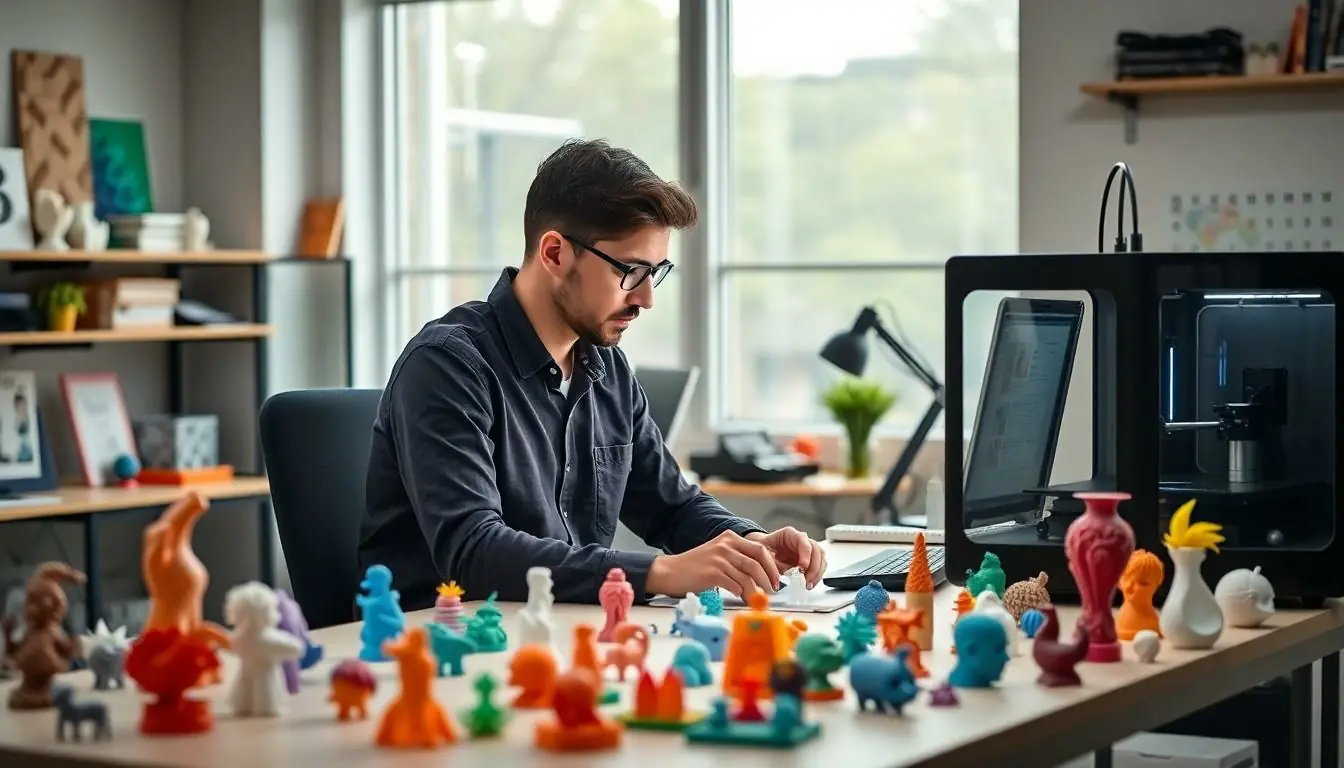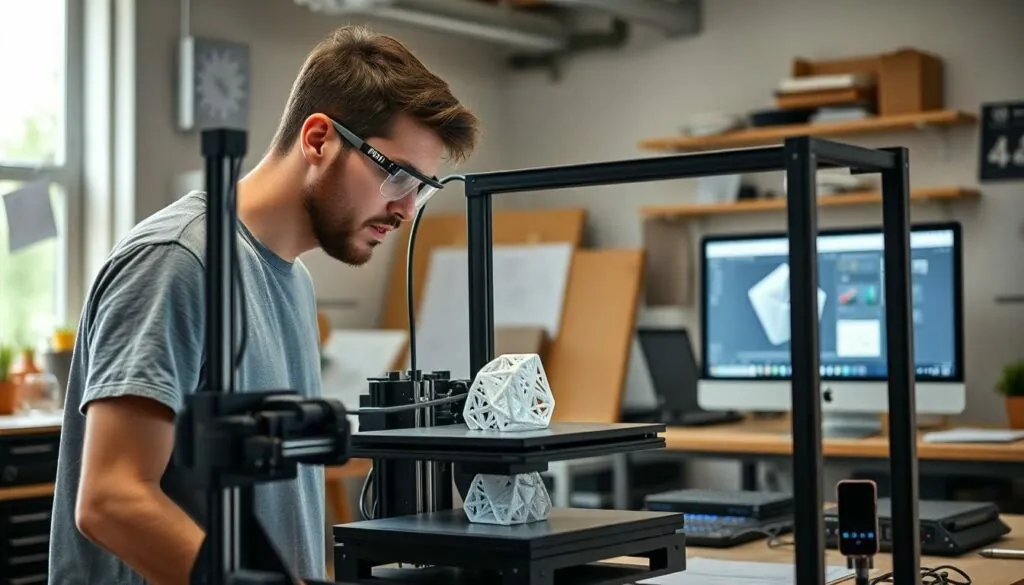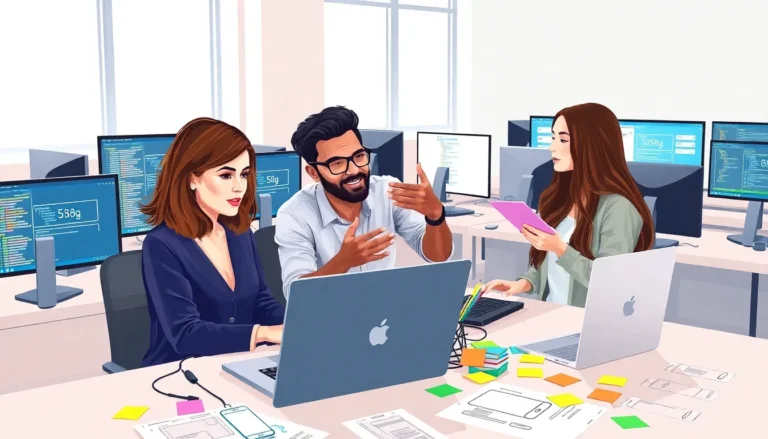In a world where imagination meets technology, 3D printing is the magic wand that turns dreams into reality. Designers everywhere are discovering the thrill of transforming their wild ideas into tangible creations. But before diving into the printer’s embrace, one must master the art of designing for this revolutionary medium. Think of it as a dance; you’ve got to know the steps to avoid stepping on toes—or in this case, ruining your masterpiece.
Table of Contents
ToggleUnderstanding 3D Printing
3D printing transforms digital designs into physical objects. This technology allows for intricate details and customization, making it essential for modern design.
What Is 3D Printing?
3D printing, also known as additive manufacturing, involves creating three-dimensional objects layer by layer. This process starts from a digital model, which printing software interprets. Material is added incrementally, enabling complex shapes unattainable through traditional methods. Various materials including plastic, metal, and resin can be used, depending on the application. Established technologies like FDM and SLA dominate the landscape, offering diverse options for designers.
Applications of 3D Printing
3D printing finds applications across multiple industries. Prototyping in product development shortens the feedback loop and accelerates innovation. Medical applications include creating custom prosthetics and implants that fit individual anatomies. In aerospace, 3D-printed components reduce weight and enhance fuel efficiency. The fashion industry embraces personalized accessories and clothing. Architecture benefits from scaled models for visualizing projects. Each of these domains illustrates how versatile and impactful 3D printing technology can be.
Key Principles of Design for 3D Printing

Designing for 3D printing requires understanding specific principles that enhance functionality and aesthetics. Prioritizing design considerations ensures successful prints and maximizes the technology’s potential.
Importance of Design Considerations
Design considerations significantly impact print quality and material usage. Effective designs account for the capabilities and limitations of 3D printing technologies. Orientation can affect strength and appearance, while layer height influences detail and smoothness. Optimizing for supports minimizes material waste and printing time. Designers who understand these aspects create more efficient and reliable models.
Common Design Challenges
Many designers face challenges unique to 3D printing. Overhangs require support structures, which can complicate the printing process. Thin walls often lead to weak parts, impacting durability and function. Additionally, achieving intricate geometries can increase print failure rates. Designers must balance creativity with practical considerations, ensuring the final product meets expectations and functions as intended. Regular testing and iteration often resolve these common issues, leading to better overall designs.
Design Software and Tools
Choosing the right design software and tools is essential for successful 3D printing projects. Various software options cater to different skill levels and requirements.
Popular Software for 3D Printing
Fusion 360 is a widely favored choice among professionals, offering advanced features for parametric modeling. TinkerCAD stands out for beginners due to its user-friendly interface and simplicity. Blender provides powerful modeling tools for creating intricate designs, which is popular among artists. Onshape delivers cloud-based collaboration capabilities, allowing teams to work together seamlessly. SolidWorks excels in engineering applications, emphasizing detailed part designs.
Features to Look For in Design Software
Compatibility with various file formats is crucial, ensuring ease of transferring designs to printers. Intuitive user interfaces help streamline the design process, making it accessible for designers. Advanced modeling capabilities allow for detailed and complex shapes. Support for simulation and analysis enhances design reliability, identifying potential issues before printing. Finally, built-in libraries or galleries provide easy access to standard components, saving time during the design phase.
Best Practices for Successful 3D Printing Design
Designing for 3D printing involves a thorough understanding of best practices that enhance the printability of designs. Designers must consider geometry, overhangs, and support structures. Improving design simplicity often leads to better outcomes. Utilizing features like chamfers or fillets can enhance the print quality while reducing stresses on printed parts. Integrating supports directly into designs can minimize post-processing efforts.
Material selection plays a crucial role in the overall design process. Choices like PLA, ABS, or PETG significantly impact design strategies. PLA offers ease of use and good surface finish, while ABS provides durability yet requires careful temperature management. Understanding material properties informs decisions on wall thickness, infill, and layer height. Designers must test materials under expected conditions for optimal performance. Correlating material and design not only boosts functionality but also enhances visual appeal.
Testing and Prototyping
Testing and prototyping play vital roles in the design process for 3D printing. Designers utilize these processes to refine their concepts and address potential issues before full-scale production.
Importance of Prototyping in Design
Prototyping serves as a critical step in verifying design concepts. It allows designers to evaluate functionality, fit, and aesthetics. Rapid prototyping techniques enable quick iterations, making it easier to identify and resolve issues early in the design phase. Feedback from physical models helps iterate designs more effectively. Effective use of prototyping reduces the risk of costly mistakes during production. Moreover, prototypes foster collaboration among stakeholders, ensuring that everyone aligns with project goals.
Methods for Testing 3D Printed Designs
Testing 3D printed designs involves various methods to ensure reliability and performance. Designers often employ visual inspections to detect flaws and gauge surface quality. Functional testing evaluates how well the prototype performs under real-world conditions. Some may use stress testing to assess material strength and durability, while others conduct fit tests to confirm assembly compatibility. Simulation tools also provide valuable insights, enabling designers to predict behavior under different scenarios. Each method contributes to creating a more refined final product, enhancing overall success in the 3D printing journey.
Embracing the world of 3D printing opens up endless possibilities for designers. By mastering the unique aspects of design tailored to this technology, they can transform innovative ideas into tangible products. Understanding the intricacies of geometry, material selection, and prototyping is vital for achieving successful results.
Regularly testing and refining designs ensures that creativity aligns with practicality, leading to enhanced functionality and aesthetics. With the right tools and knowledge, designers can confidently navigate the challenges of 3D printing, ultimately contributing to advancements across various industries. The journey of designing for 3D printing is not just about creating objects; it’s about pushing the boundaries of imagination and technology.



